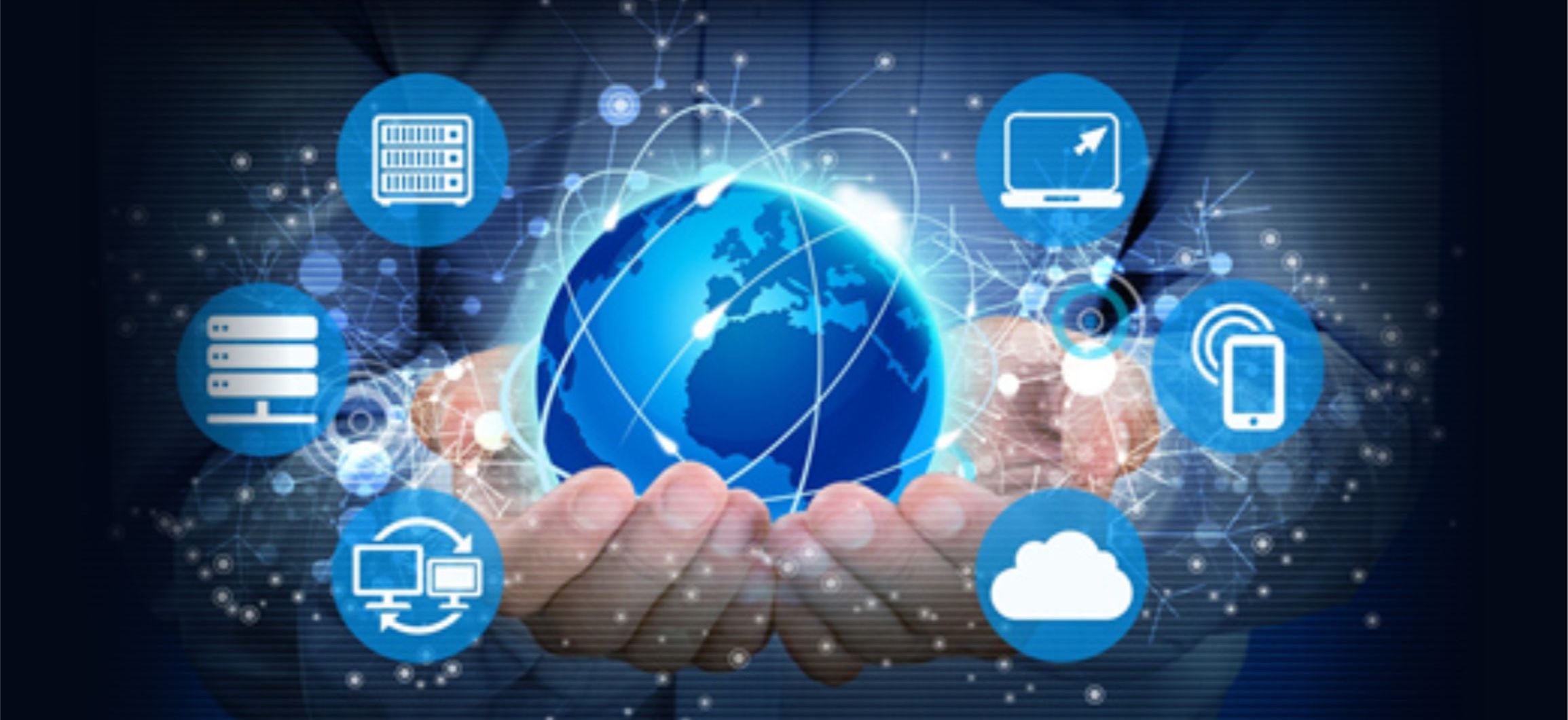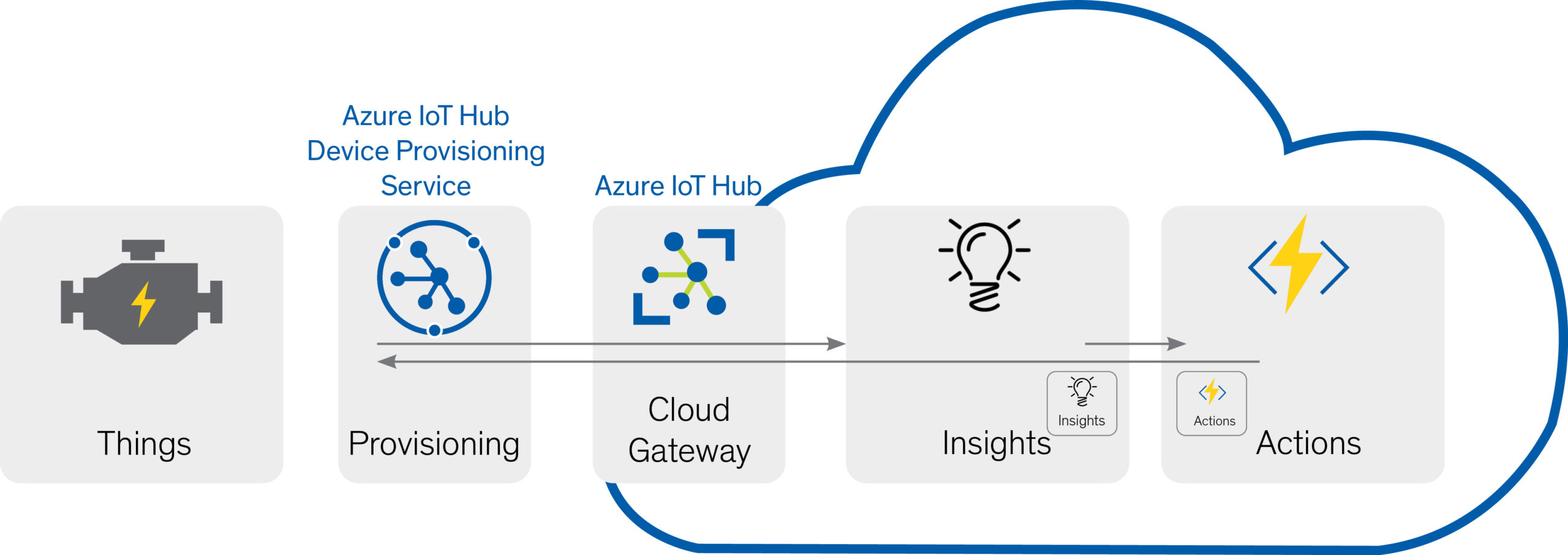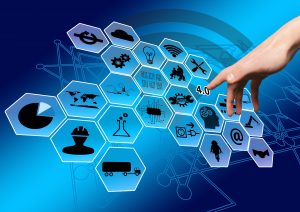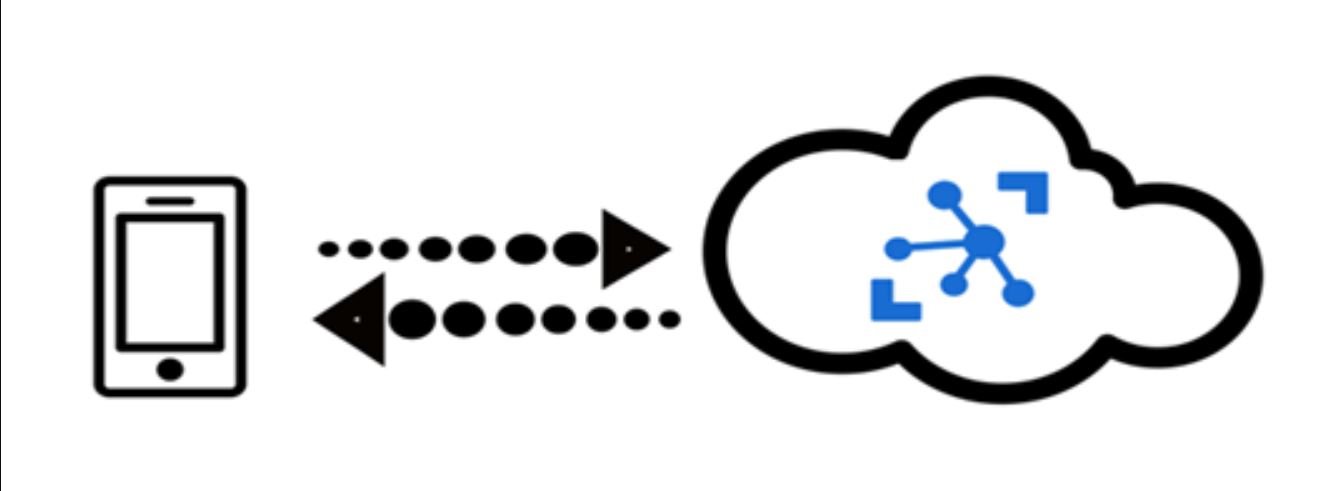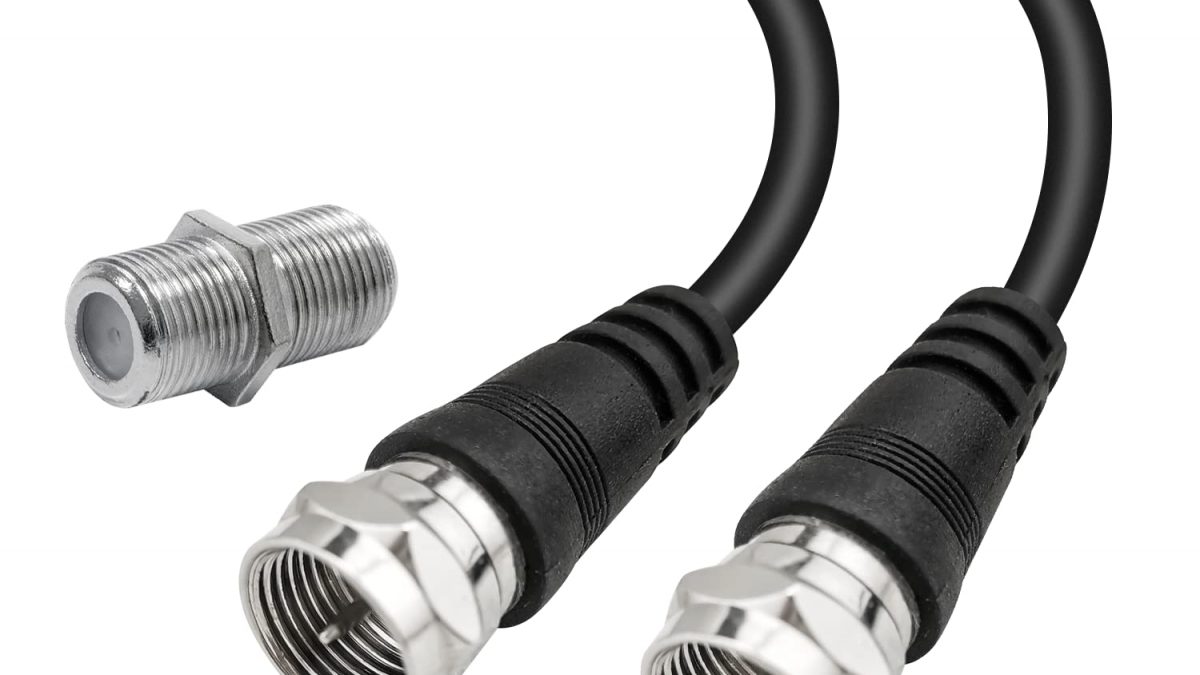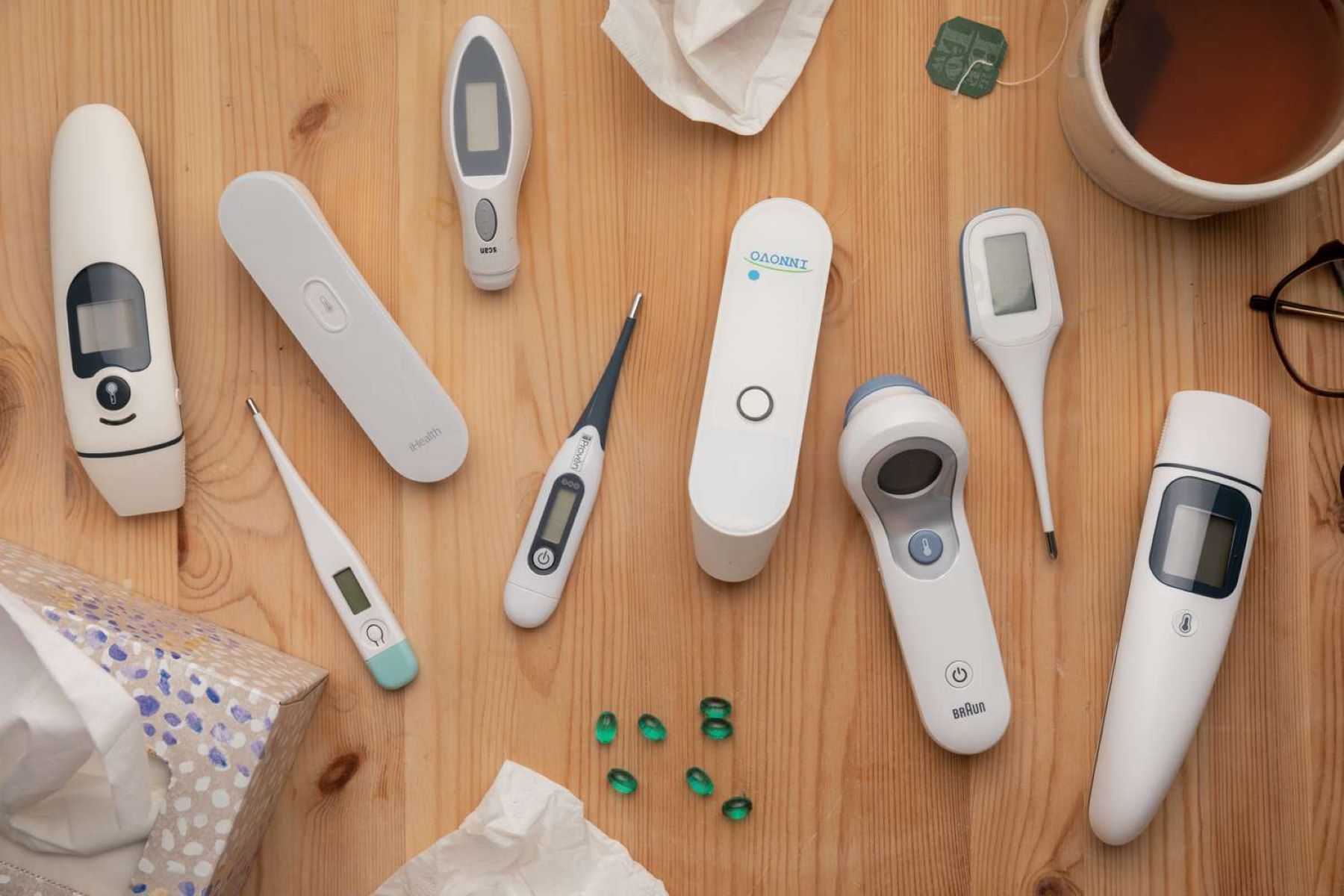Introduction
Welcome to the world of digital twins in IoT! As technology continues to evolve, the concept of digital twins has gained significant traction in various industries. This innovative approach to leveraging IoT data has revolutionized the way we design, develop, and manage complex systems.
At its core, a digital twin is a virtual representation of a physical object, process, or system. It is created by combining real-time data from sensors, devices, and other sources with advanced analytics. This virtual replica mirrors the physical entity, allowing for real-time monitoring, analysis, and optimization.
Whether it’s a machine on a factory floor, a building, or even an entire city, digital twins provide invaluable insights and capabilities. They enable businesses to optimize operations, improve efficiency, and make data-driven decisions. With the power of IoT, digital twins are becoming increasingly sophisticated and transformative.
In this article, we will explore the fascinating world of digital twins in IoT, uncovering their definition, components, benefits, real-world examples, challenges, and their future outlook.
Let’s dive in and discover how digital twins are shaping the future of various industries!
Definition of a Digital Twin
A digital twin is a virtual representation or model of a physical object, process, or system. It is created by capturing and integrating real-time data from sensors, devices, and other sources. This data is then combined with advanced analytics and visualization techniques to create a virtual replica that mimics the physical entity.
Think of a digital twin as a bridge between the physical and digital worlds. It provides a means to monitor, analyze, and optimize the performance of a physical asset or system without the need for direct interaction. By capturing real-time data from sensors embedded in the physical entity, a digital twin can provide a detailed and accurate representation of its current state.
With the rapid advancement of IoT technologies, digital twins have become more sophisticated. They are not just static digital models but dynamic entities that continuously evolve and adapt based on real-time data. This enables businesses to gain deep insights into the behavior, performance, and condition of their assets or processes.
It’s important to note that a digital twin goes beyond simple 3D models or simulations. It incorporates real-time data and analytics to provide a holistic view of the physical entity. This allows for predictive and prescriptive analysis, enabling businesses to anticipate and mitigate potential issues, optimize performance, and improve decision-making.
Overall, the key characteristics of a digital twin are:
- Virtual representation of a physical object, process, or system.
- Created by integrating real-time data from sensors and other sources.
- Uses advanced analytics for analysis and optimization.
- Enables monitoring, simulation, and prediction of the physical entity.
Now that we have a clear understanding of what digital twins are, let’s explore the components that make up a digital twin in the next section.
Components of a Digital Twin
A digital twin is comprised of several components that work together to create a comprehensive virtual replica of a physical object, process, or system. These components ensure that the digital twin accurately reflects the behavior, performance, and characteristics of its physical counterpart. Let’s explore the key components of a digital twin:
- Physical Entity: The physical entity is the real-world object or system that the digital twin represents. It could be a machine, a building, a vehicle, or any other tangible asset. The physical entity is equipped with sensors and other IoT devices that capture real-time data for the digital twin.
- Data Collection: Sensors and IoT devices embedded in the physical entity collect data on various parameters such as temperature, pressure, vibration, speed, and more. This data is continuously transmitted to the digital twin, ensuring that it reflects the current state of the physical entity.
- Data Integration: The collected data from sensors is combined with other relevant data sources such as historical data, maintenance records, and external data feeds. This integration allows for a comprehensive and holistic view of the physical entity, enabling more accurate analysis and optimization.
- Data Analytics: Advanced analytics techniques are applied to the integrated data to extract meaningful insights. Machine learning algorithms, statistical analysis, and other data analytics methods are used to identify patterns, trends, anomalies, and correlations within the data. This analysis helps to understand the behavior and performance of the physical entity.
- Visualization: The analyzed data is presented in a visual format through dashboards, graphs, charts, and other visualization tools. This allows users to easily interpret and understand the information provided by the digital twin. Visualization also helps in identifying trends, anomalies, and areas for improvement.
- Simulation and Modeling: Digital twins often incorporate simulation and modeling capabilities to predict the behavior and performance of the physical entity under different scenarios. By simulating various conditions and scenarios, businesses can proactively identify potential issues, optimize performance, and make informed decisions.
- Interaction and Control: Digital twins can interact with the physical entity in real-time. They can receive instructions and commands from users or external systems and transmit them to the physical entity. This enables remote monitoring, control, and optimization of the physical asset or system.
By combining these components, digital twins provide a powerful platform for monitoring, analyzing, and optimizing physical assets and systems. They enable businesses to gain deep insights, improve efficiency, reduce downtime, and make data-driven decisions.
Now that we have explored the components of a digital twin, let’s delve into the role of IoT in creating digital twins in the next section.
The Role of IoT in Creating Digital Twins
The Internet of Things (IoT) plays a pivotal role in the creation and operation of digital twins. IoT technology enables the seamless integration of physical assets, sensors, and devices with the digital realm, allowing for the real-time collection and transmission of data. This data forms the foundation of digital twins, providing the necessary insights to monitor, analyze, and optimize physical entities. Let’s dive deeper into the role of IoT in creating digital twins:
Data Collection: IoT devices, such as sensors and actuators, are embedded in the physical entity to collect real-time data on various parameters. These devices capture information such as temperature, pressure, humidity, location, and more. The data collected by IoT devices forms the cornerstone of digital twins, ensuring that the virtual replica reflects the current state of the physical entity.
Connectivity: IoT enables seamless connectivity between devices, sensors, and the digital infrastructure. It allows for the uninterrupted transmission of data from the physical entity to the digital twin. Whether it’s through wired or wireless communication protocols, IoT ensures that the data captured by the sensors is transmitted efficiently and securely.
Cloud Computing: The scale of data generated by IoT devices can be enormous, requiring robust storage and processing capabilities. Cloud computing platforms play a crucial role in handling this massive volume of data. By leveraging cloud infrastructure, digital twins can store, process, and analyze the collected data, providing real-time insights and enabling advanced analytics.
Data Integration: IoT devices not only collect data, but they also facilitate the integration of various data sources. The collected data is combined with historical data, maintenance records, environmental data, and other relevant information. This integrated data provides a comprehensive and holistic view of the physical entity, enabling accurate analysis and optimization within the digital twin.
Real-Time Monitoring: IoT-enabled digital twins offer real-time monitoring capabilities, allowing businesses to continuously track the performance and condition of the physical entity. Real-time data from sensors is transmitted to the digital twin, providing instantaneous updates. This enables businesses to detect anomalies, identify potential issues, and take proactive measures to ensure optimal performance.
Remote Control and Optimization: IoT connectivity allows for remote control and optimization of physical assets or systems through digital twins. Businesses can remotely monitor and control the physical entity, making adjustments and optimizations based on real-time data. This can lead to increased efficiency, reduced downtime, and improved operational effectiveness.
The combination of IoT technology and digital twins has the potential to revolutionize industries across the board. From manufacturing and healthcare to transportation and energy, IoT-powered digital twins provide valuable insights, optimize performance, and drive innovation.
Now that we understand the role of IoT in creating digital twins, let’s explore the benefits they offer in the next section.
Benefits of Digital Twins
Digital twins offer a wide range of benefits across various industries. By leveraging real-time data, advanced analytics, and IoT connectivity, digital twins enable businesses to gain valuable insights, optimize operations, and make informed decisions. Let’s explore some of the key benefits of digital twins:
Optimized Performance: Digital twins provide a holistic view of physical assets or systems, allowing businesses to monitor and optimize their performance in real-time. By analyzing the data collected from sensors, businesses can identify inefficiencies, predict maintenance needs, and make data-driven decisions to improve overall operational effectiveness.
Reduced Downtime: By continuously monitoring the condition of physical assets or systems, digital twins can help detect potential issues before they escalate into major problems. This enables businesses to proactively address maintenance needs, minimize unplanned downtime, and ensure smooth operations. By predicting and preventing failures, businesses can save time, resources, and costs.
Improved Efficiency: Digital twins provide insights into how assets or systems are utilized, allowing for optimization and efficiency improvements. By analyzing real-time data, businesses can identify areas of inefficiency, eliminate bottlenecks, and maximize resource utilization. This can lead to increased productivity, reduced waste, and improved overall efficiency.
Enhanced Decision Making: Digital twins offer businesses a wealth of data-driven insights that can inform decision-making processes. By analyzing real-time and historical data, businesses can gain a deeper understanding of asset performance, customer behavior, and market trends. This empowers stakeholders to make informed decisions, optimize processes, and drive innovation.
Cost Savings: Digital twins can help businesses reduce costs in various ways. By optimizing asset performance, minimizing downtime, and improving efficiency, businesses can avoid unnecessary expenses associated with repairs, maintenance, and disruptions. Additionally, predictive analytics capabilities within digital twins enable businesses to optimize asset lifecycle management, resulting in cost savings over the long term.
Enhanced Safety and Risk Management: Real-time monitoring and analysis provided by digital twins contribute to enhanced safety and risk management. By detecting anomalies and potential risks, businesses can take proactive measures to mitigate them before they pose a danger. This is especially beneficial in industries such as manufacturing, healthcare, and transportation, where safety and risk management are critical factors.
These are just a few of the many benefits that digital twins offer. As organizations continue to explore the potential of digital twin technology, we can expect even more innovative applications and transformative impacts in various industries.
Now, let’s delve into real-world examples of digital twins in IoT to understand how they are being implemented in practice.
Real-World Examples of Digital Twins in IoT
Digital twins are being utilized across various industries to enable smarter decision-making, improve operational efficiency, and optimize performance. Let’s explore some real-world examples of digital twins in IoT:
Manufacturing: In the manufacturing sector, digital twins are transforming production processes. For instance, automotive companies are using digital twins to simulate and optimize the manufacturing line, identifying bottlenecks and reducing production cycle times. By connecting physical assets, such as machines and robots, to virtual twins, manufacturers can monitor performance, predict maintenance needs, and improve overall equipment effectiveness.
Smart Buildings: Digital twins are revolutionizing the management of smart buildings. By integrating data from sensors embedded in various systems, such as heating, ventilation, and air conditioning (HVAC), lighting, and security, building managers can monitor and optimize energy consumption, improve occupant comfort, and proactively identify maintenance needs. Digital twins allow for data-driven decision-making and enable efficient building operation and management.
City Infrastructure: Cities are utilizing digital twins to improve urban planning and optimize infrastructure. By creating digital replicas of entire urban areas, city planners can simulate and optimize traffic flow, energy usage, waste management, and water distribution systems. This allows for more efficient resource allocation, reduced environmental impact, and enhanced quality of life for residents.
Healthcare: Digital twins are making significant advancements in the healthcare industry. For example, patient-specific digital twins are being used to simulate and optimize surgical procedures, providing physicians with valuable insights before performing complex operations. Digital twins also enable remote monitoring of patients, allowing healthcare professionals to diagnose and treat conditions in real-time, leading to more personalized and timely care.
Utilities: Energy and utility companies are capitalizing on digital twins to optimize their infrastructure and enhance service reliability. By combining real-time data from sensors monitoring power grids, pipelines, or water systems with virtual replicas, utilities can detect issues, predict failures, and optimize maintenance and distribution processes. Digital twins enable more efficient and sustainable energy and utility management.
Agriculture: Digital twins are being employed in precision agriculture to optimize crop yield and resource utilization. By monitoring weather conditions, soil moisture, and crop health through sensors, digital twins help farmers make data-driven decisions regarding irrigation, fertilization, and pest control. This leads to improved crop quality, reduced resource wastage, and increased agricultural productivity.
These are just a few examples of how digital twins are being implemented in the real world. Across industries, digital twins are revolutionizing operations, enabling predictive maintenance, and driving innovation. The versatility and scalability of digital twin technology make it applicable to a wide range of use cases.
Now that we have explored real-world examples, let’s discuss the challenges associated with implementing digital twins.
Challenges in Implementing Digital Twins
While digital twins offer tremendous potential, implementing them can come with several challenges. Let’s explore some of the key challenges that organizations may face when adopting and implementing digital twins:
Data Integration: Integrating data from various sources can be complex, especially when dealing with diverse data formats, protocols, and standards. Ensuring seamless data integration requires careful planning, compatibility assessment, and the use of standardized interfaces and protocols. Data quality and consistency also need to be addressed to ensure accurate digital twin representation.
Data Security and Privacy: As digital twins rely on real-time and sensitive data, ensuring data security and privacy is critical. Enterprises must implement robust security measures to protect against unauthorized access, data breaches, and potential vulnerabilities. Proper encryption, access controls, and data anonymization techniques should be employed to safeguard sensitive information.
Data Governance and Management: Managing and governing the vast amount of data generated by digital twins can be challenging. Organizations need to establish clear data governance policies and practices to ensure proper data management, including data storage, backup, retention, and accessibility. Data governance frameworks should address issues like ownership, data sharing, and compliance with relevant regulations.
IoT Device Deployment and Management: Deploying and managing a network of IoT devices can be complex due to factors like device compatibility, connectivity issues, and maintenance requirements. Organizations must carefully plan and execute the deployment process, ensuring proper device configuration, connectivity testing, and ongoing device management to ensure uninterrupted data collection from sensors.
Scalability and Performance: As the volume and velocity of data generated by digital twins increase, scalability and performance become critical factors. Scaling the infrastructure to handle growing data loads and ensuring real-time processing capabilities can be challenging. Proper capacity planning, infrastructure optimization, and performance monitoring are essential to maintain the efficiency and effectiveness of digital twins.
Skills and Expertise: Successfully implementing digital twins requires a skilled workforce with expertise in areas such as data analytics, IoT, and domain-specific knowledge. Organizations may face challenges in hiring and retaining talent with the necessary technical skills and industry knowledge to effectively leverage digital twin technology.
Cost and Return on Investment: Implementing digital twins entails upfront investments in hardware, software, infrastructure, and talent. Organizations need to carefully assess the costs associated with digital twin implementation and gauge the potential return on investment. Demonstrating the value and benefits of digital twins may be necessary to secure adequate funding and support for implementation.
Addressing these challenges requires strategic planning, effective collaboration across stakeholders, and continuous monitoring and improvement of digital twin initiatives. By overcoming these challenges, organizations can unlock the full potential of digital twins to drive innovation, improve efficiency, and deliver tangible business value.
Now, let’s explore the future outlook for digital twins in IoT.
Future Outlook for Digital Twins in IoT
The future of digital twins in IoT holds tremendous potential for innovation and transformation across industries. As technology continues to advance and connectivity becomes more pervasive, we can expect several key trends in the evolution of digital twins:
Increased Adoption: The adoption of digital twins is expected to increase rapidly as organizations recognize their value and benefits. More industries will embrace digital twins as a strategic tool to optimize operations, improve decision-making, and enhance customer experiences. As the technology becomes more accessible and easier to implement, digital twins will become a mainstream and integral part of business processes.
Advanced Analytics and AI: Digital twins will increasingly leverage advanced analytics techniques, machine learning, and artificial intelligence (AI). These technologies will enable more accurate predictive models, deeper insights, and more effective decision-making. By applying AI algorithms to real-time data, digital twins can optimize complex systems, anticipate failures, and continuously improve performance.
Digital Twin Ecosystems: Digital twins will become part of larger ecosystems, connecting multiple entities within industry supply chains and value networks. This interconnectedness will enable seamless data sharing, collaboration, and optimization across various stakeholders. The integration of digital twins across different domains will unlock new opportunities for innovation and value creation.
Virtual-Physical Convergence: The convergence of virtual and physical worlds will become more seamless, blurring the boundaries between the two. Digital twins will leverage technologies like augmented reality (AR) and virtual reality (VR) to provide immersive experiences. This will allow users to interact with virtual replicas, visualize data, and simulate scenarios in real-time, enhancing decision-making and exploration of what-if scenarios.
Emergence of Digital Twin Marketplaces: With the rise of digital twins, we can expect the emergence of digital twin marketplaces, where organizations can access, share, and exchange digital twin models, data, and services. These marketplaces will foster collaboration, accelerate innovation, and create new business opportunities by enabling interoperability and data-driven partnerships.
Regulatory and Ethical Considerations: As digital twins become more prevalent, there will be a need for regulatory frameworks to govern their use. Privacy, security, and ethical considerations will need to be addressed to ensure responsible and transparent deployment of digital twins, especially in industries like healthcare and transportation that deal with sensitive data and safety-critical systems.
These trends point towards a future where digital twins will play an increasingly vital role in shaping industries and driving innovation. By capitalizing on the potential of digital twins in IoT, organizations can optimize operations, improve customer experiences, and unlock new avenues for growth and competitive advantage.
Now, let’s conclude our exploration of digital twins in IoT.
Conclusion
Digital twins in IoT have emerged as a transformative technology with the potential to revolutionize various industries. These virtual replicas of physical objects or systems, created by integrating real-time data and advanced analytics, offer invaluable insights and optimization opportunities.
We have explored the definition and key components of digital twins, understanding how they leverage IoT connectivity to monitor, simulate, and optimize physical assets or processes. Moreover, we have examined the benefits that digital twins bring, including optimized performance, reduced downtime, improved efficiency, enhanced decision-making, cost savings, and enhanced safety.
Real-world examples highlight the diverse applications of digital twins across industries, from manufacturing and smart buildings to healthcare and utilities. These examples demonstrate the power of digital twins in driving innovation, improving operational effectiveness, and delivering valuable insights.
However, implementing digital twins does come with challenges such as data integration, security, scalability, and skills requirements. Overcoming these challenges requires strategic planning, collaboration, and ongoing management to ensure successful implementation and maximize the potential of digital twins.
The future outlook for digital twins in IoT is promising, with increased adoption, advanced analytics and AI capabilities, virtual-physical convergence, and the emergence of digital twin marketplaces. Regulatory and ethical considerations will also shape the responsible and transparent deployment of digital twins.
As businesses and industries continue to embrace digital twins in IoT, they will unlock new opportunities, drive efficiency, optimize performance, and deliver innovative solutions. By understanding and harnessing the power of digital twins, organizations can stay ahead of the curve and thrive in the digital era.







